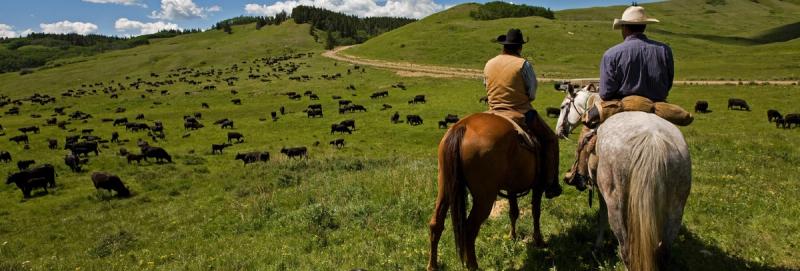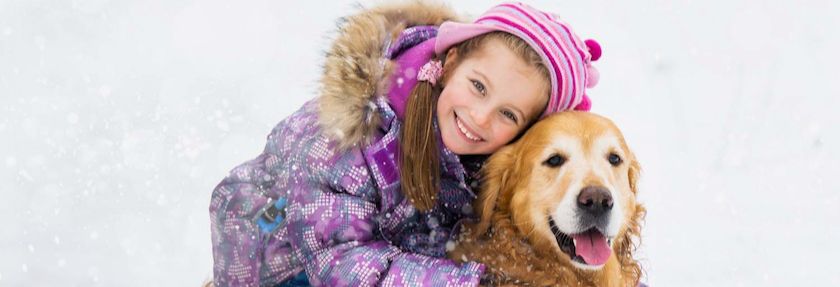Putting Riders Back on the Range


Written by Stacey Clary
April 19, 2019
In August 2018, a wildfire traveled across the top of the ridge on Glenn Elzinga’s Alderspring Ranch, burning a quarter of his Forest Service allotment in one night. It came within three miles of where Elzinga, whose ranch is in May, Idaho, knew his cattle were. Watching forecasts showing a wind event coming in, Glenn moved his cattle to another ranch for safety. The fire storm did come in and burned about a mile from the cattle had been.
“One more day and we would have lost cattle. If we were running cattle conventionally, we certainly would have lost cattle—there wouldn’t have been enough time to find all of them under that practice,” says Elzinga.
The alternative practice Glenn uses is known as “inherding.” Inherding, as first generation rancher Elzinga practices it, controls animal movements by moving them daily, 24/7, by herders on horseback.

All together now
Typically, ranchers in the West allow cattle roam unmanaged on grazing allotments for the season. One of the grazing practice’s many benefits is knowing where cattle are located at all times. In this situation, Elzinga avoided the financial loss from searching for days and from potential cattle deaths.
As this customary practice has become more controversial and challenging, Elzinga turned to inherding. Originally seeking a way to coexist with wolves while reducing cattle losses, Elzinga and his herders discovered even more exciting results from the management practice.
Fewer wolf losses, less environmental impact
When first experimenting with inherding to reduce wolf impacts, Elzinga and his herders learned that with the complete control of the cattle’s location, the cattle could be watered in selected sites. The cattle then had minimal impact on stream banks and they could avoid the springs altogether.
They also saw benefits in the ability to use their allotment more lightly by bringing cattle to areas they wouldn’t go to on their own.
With these observations, Elzinga realized they might be on to something. The practice of using targeted grazing—keeping cattle in where they want the land managed—would benefit ranchers facing challenges with endangered species listings, increased water quality regulations, reintroduction of wolves, and increased conflicts with recreational users.
Elzinga, with his Western SARE Farmer/Rancher grant, built upon what they had learned during that one summer by gathering more data on using inherding to meet ecological objectives.
Incentives might be worth the effort
By the end of the project, Alderspring Ranch had exceeded all 2016 Forest Service and Bureau of Land Management standards and guidelines. The Forest Service continues to be interested in the ecological benefits and requested Elzinga’s help to get others involved. He believes that there may be some takers.
But given the costs that accompany inherding, it would be useful if the Forest Service could provide those ranchers with incentives, he says, supporting the permittees as they figure it out in a way that takes care of the habitat.
Elzinga’s goal is to get to an economy of scale, where the investment of additional employees and management time equals the cost of renting private pasture. Then other ranchers might start using the practice.
For Alderspring Ranch, “It’s gone well; our cattle have done better with weight gain this year. I spent time with the crew this year to train about feeding. I will certainly do this again next year.”
Elzinga continues to share information about inherding on his blog, found at alderspring.com/organic-beef-matters.
Tags:Country Critters

Acreage Life is part of the Catalyst Communications Network publication family.













